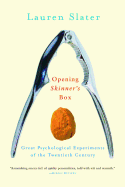Reference
Dominikus Baur, Sebastian Boring, and Andreas Butz
Rush: Repeated Recommendations on Mobile Devices
Intelligent User Interfaces
This paper talks about a recommendation based interface for mobile devices. While recommendation interfaces are very popular on desktop products, little has been done in order to adapt them to mobile devices. Even when these interfaces have been ported to such devices, they do not take into account orientation of the screen or occlusion problems that occur while controlling the touch interface in such a small device. In a sense, this interface is very similar to Dasher since it uses continuous gestures to increase efficiency.
Intelligent User Interfaces
Summary
This paper talks about a recommendation based interface for mobile devices. While recommendation interfaces are very popular on desktop products, little has been done in order to adapt them to mobile devices. Even when these interfaces have been ported to such devices, they do not take into account orientation of the screen or occlusion problems that occur while controlling the touch interface in such a small device. In a sense, this interface is very similar to Dasher since it uses continuous gestures to increase efficiency.
Discussion


